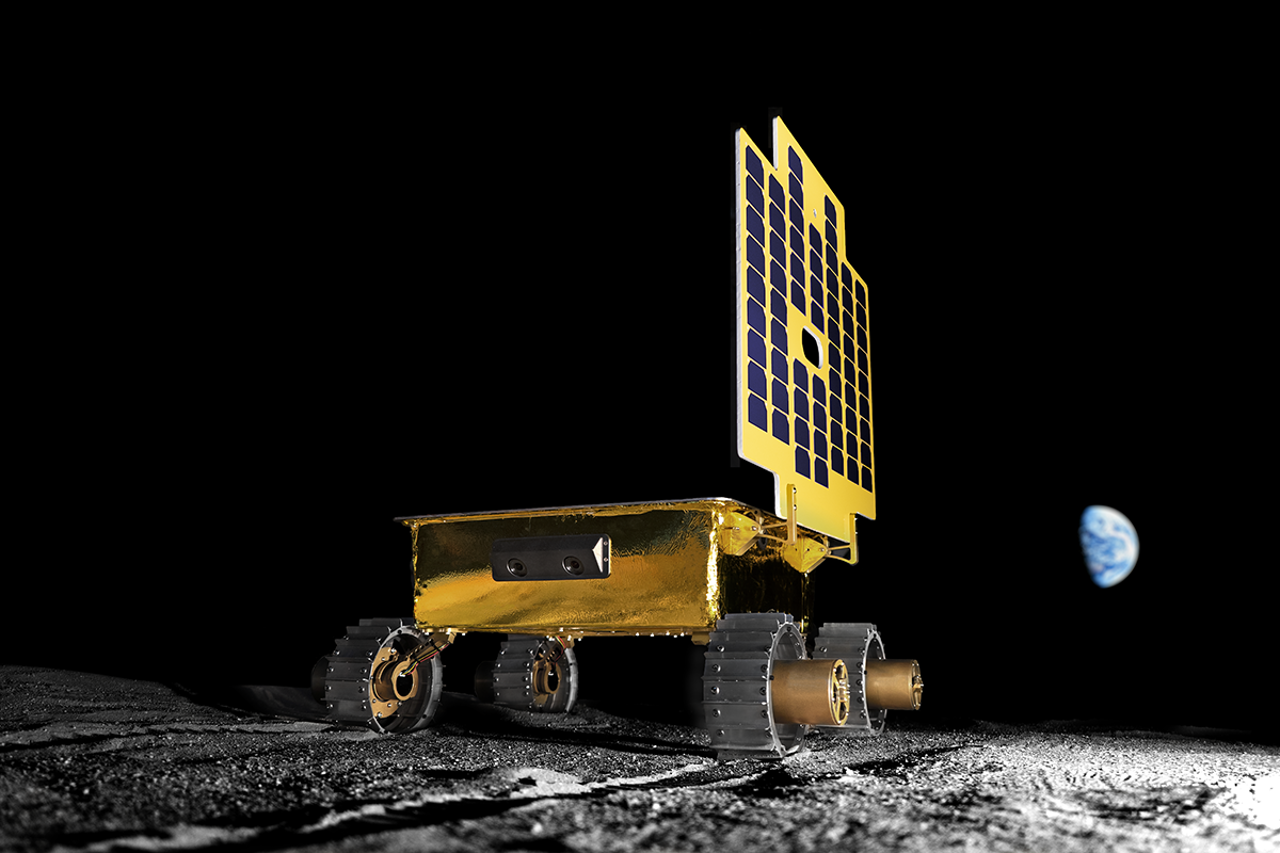MoonRanger Passes Key NASA Review Ahead of Lunar Mission Joint Project Between CMU, Astrobotic, NASA Ames Research Center Eyes 2023 Launch
Thursday, July 15, 2021Print this page.

MoonRanger, an autonomous rover headed to the moon in 2023 to explore the lunar south pole, passed NASA's key decision point (KDP) review and is in the final stages of preparation.
Passing this milestone review is a greenlight from NASA to continue work on the suitcase-sized rover developed by Carnegie Mellon University and its spinoff Astrobotic in collaboration with NASA's Ames Research Center. To pass the review, the MoonRanger team had to prove that the rover's cost, schedule and technical design were viable.
"This robot's success has been decades in the making at CMU. Such things worth doing are rarely quick or easy," said William "Red" Whittaker, who is leading MoonRanger's technical development at CMU. "I am in awe of MoonRanger's students, staff, interns and faculty who have given of themselves to make this dream a reality."
Whittaker, the University Founders Research Professor in the Robotics Institute, said upcoming technical challenges include achieving the reliability required for space and mastering the complexities of full-system interdependencies.
MoonRanger will be the first truly autonomous microrover on the lunar surface, said Joe Zimo, lead systems engineer for planetary mobility at Astrobotic. The rover's autonomy software will build 3D maps of the lunar surface and demonstrate long-range and communication-denied exploration. Using visual odometry with a stereo camera system and a sun sensor, the rover can independently orient itself on the lunar surface. Its mobility system will provide valuable insight into how the moon's rocky terrain affects small rover-scale motors.
"It is designed to map its surroundings and make intelligent navigational decisions based on what it sees without being guided, supervised or teleoperated from Earth," Zimo said. "This is an ambitious mission with a relatively miniscule budget when compared with past rover missions of similar scope. I commend our team for developing such a capable, meaningful system and mission."
MoonRanger's next major milestone is a system integration review (SIR) around February 2022. After successful completion of SIR, the rover will be fully assembled, tested and integrated with a lunar lander. MoonRanger will be delivered to the moon through the NASA Commercial Lunar Payload Services (CLPS) program in 2023 and operated on the lunar surface by CMU.
Aaron Aupperlee | 412-268-9068 | aaupperlee@cmu.edu
